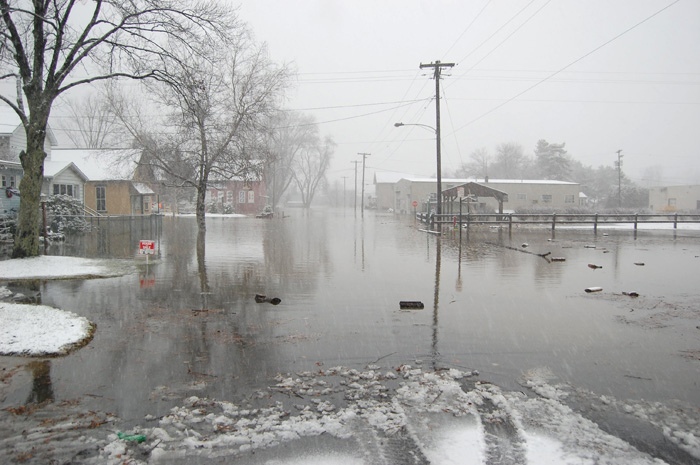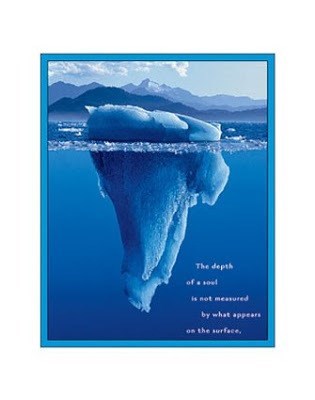
EARTHCACHE REQUIREMENTS
Each cacher must send his/her own answers BEFORE logging a find. ... "Geocachers must complete the tasks before they log the EarthCache as found." (4.3. EarthCache logging tasks)
Enjoy the journey (learning adventure) as well as the destination (smiley earned). Remember to take only pictures and leave only footprints. To get credit for this Earthcache, complete the following tasks:
ANSWERS ... SEND ALL ANSWERS VIA MESSAGE
LOG ... INCLUDE FIVE ON-SITE VERIFICATION PICTURES ... Library / Pitt 3 / Crook Farm
This cache is part of the ANF (Allegheny National Forest) series. The locations are not located directly in the ANF, but are part of the region.
READING
1. MESSAGE …. a. Native American name of the creek? / b. Part of what watershed?
2. MESSAGE …. a. The picture shows one of the times the Tuna overflowed its banks. What year was the picture taken? (Dec 1st .... ) / b. What is the Gage Height when you visited? / c. How much water would cause the Tuna to overflow its banks? NOTE: At approx. 4' the Tuna is at flood stage. So subtract the current Gage Height from 4' to determine the amount of water needed to reach flood stage.
LIBRARY
3. MESSAGE …. a. Describe the bed/banks. / b. Give one effect of the flowing water on the bed/banks.
4. LOG …. Post a picture of you or your signature item at or near the coordinates. This picture is your log signature for this location.
PITT TRAIL
5. MESSAGE …. Choose three of the waypoints. At each one ... a. Describe the bed/banks. / b. Give one effect of the flowing water on the bed/banks.
6. LOG …. Post a picture of you or your signature item at each of the three waypoints. These pictures are your log signature for this location.
CROOK FARM TRAIL
7. MESSAGE …. a. Describe the bed/banks. / b. Give one effect of the flowing water on the bed/banks.
8. LOG …. Post a picture of you or your signature item at or near the coordinates. This picture is your log signature for this location.
SUMMARY
9. MESSAGE …. a. Compare/Contrast what you see at the three locations - Library, Pitt Trail, Crook Farm Trail. / b. What is the site that is having the most effect on bed/banks of the Tuna? Look at flow of water, obstacles, etc
OPTIONAL - Please respect the time and effort involved in finding and creating this earthcache by adding A and B to your log.
A. JOURNEY OF THE MIND ... Science explains what we observe. Relate (in your own words) something you found interesting in the reading. This adds to your learning adventure and your log.
B. JOURNEY OF THE HEART ... Art shares our personal experience of what we see. Share something special you found on site, and why it is special to you ... prose / story / poem / picture. This is a memorable addition to your log and will make other hearts smile.
Journeys of Heart and Mind ...
Stories to Touch the Heart and Puzzles to Challenge the Mind / Rainbow Tree Story

GEOLOGY OF BEDROCK
"Shale has a high porosity, but its pores are small and disconnected, so it is relatively impermeable. Impermeable rocks are desirable sealing rocks or cap rocks for reservoirs because hydrocarbons cannot pass through them readily." (Google)
Since the bedrock of the Tuna is shale, flooding is common in heavy rains.
TUNUNGWANT CREEK
The Tunungwant Creek is divided into two second-order streams (East Branch and West Branch) which join together and flow into a third-order stream (Allegheny River). The Tunungwant Creek is part of the Allegheny River watershed.
East Branch Tunungwant Creek rises about 0.5 miles southwest of Cyclone, Pennsylvania, and then flows generally north to meet Tunungwant Creek at Bradford, Pennsylvania to form Tunungwant Creek with West Branch Tunungwant Creek.
West Branch Tunungwant Creek rises about 5 miles west-southwest of Lewis Run, Pennsylvania, and then flows northeast to meet Tunungwant Creek at Bradford, Pennsylvania to form Tunungwant Creek with East Branch Tunungwant Creek.
The bedrock in McKean County is predominantly sandstone and shale. The relatively shallow depth at the posted coordinates give you a good view of the creek bed. Here you can easily observe the broken sheets of shale along the bottom of the creek, edges rounded due to the action of running water.

FLOWING WATER
Moving water erodes (wears away) both bed and banks. This erosion rounds the stone changing both size and shape. The material eroded is transported downstream, continually changing the channel (river, creek, etc). Man-made structures include building walls to contain the water, as well as placing rip rap (large rocks) on the bank to protect it from the erosive power of the flowing water.
FLOODING
The most significant natural feature of Bradford is the West Branch of the Tunungwant Creek, whose Native American name has been anglicized to "Tuna" Creek. This waterway flows into the northern portion of the district from the west and meanders eastward toward the main branch of the creek, with which it intersects just east of the district. Tuna Creek is subject to flooding and has been the focus of flood control activities for decades.
1946 ..... The usually timid Tuna Creek has turned into a flood monster time and again in Bradford’s history, but Monday night the old stream surpassed all previous performances as it staged probably the wildest time of its life. Bradfordians who have been close to the challenge of the Tuna for more than 50 years were of the opinion this one topped anything that has gone before.
(http://www3.gendisasters.com/pennsylvania/9914/bradford-pa-flood-may-1946?page=0,1)
1999 .... "You think about a normal flood where the waters are rising," he said. That isn't what happened in Bradford - which sits in a valley. All the water ran off the hillsides and slammed into the backs of houses, causing huge amounts of damage. The water never went over the Flood Control Project," he said. "I remember thinking how fortunate the city of Bradford was that the Flood Control Project was in place. It absolutely paid for itself in that one event."
(http://www.bradfordera.com/news/article_c1e6665d-a90f-59a4-86e6-70d2213af038.html)

RETAINING WALL
This is a series of evolutionary flood control retaining walls, reflecting mostly post-1950 work. This retaining wall protects the populated area of Bradford. Development downtown caused land surface changes and influenced flood conditions. So to protect property damage and public health, the retaining wall was installed. A concrete retaining wall can be observed along the Tuna only in downtown City of Bradford.
RESOURCES ... GC5D0BJ / The Tuna / East Branch / West Branch / Flowing Water / Hydrologic Data / Gage Heights
WATER
THANK YOU Earth Mother for your life-sustaining waters.
The depth of a soul is not measured by what appears on the surface.
